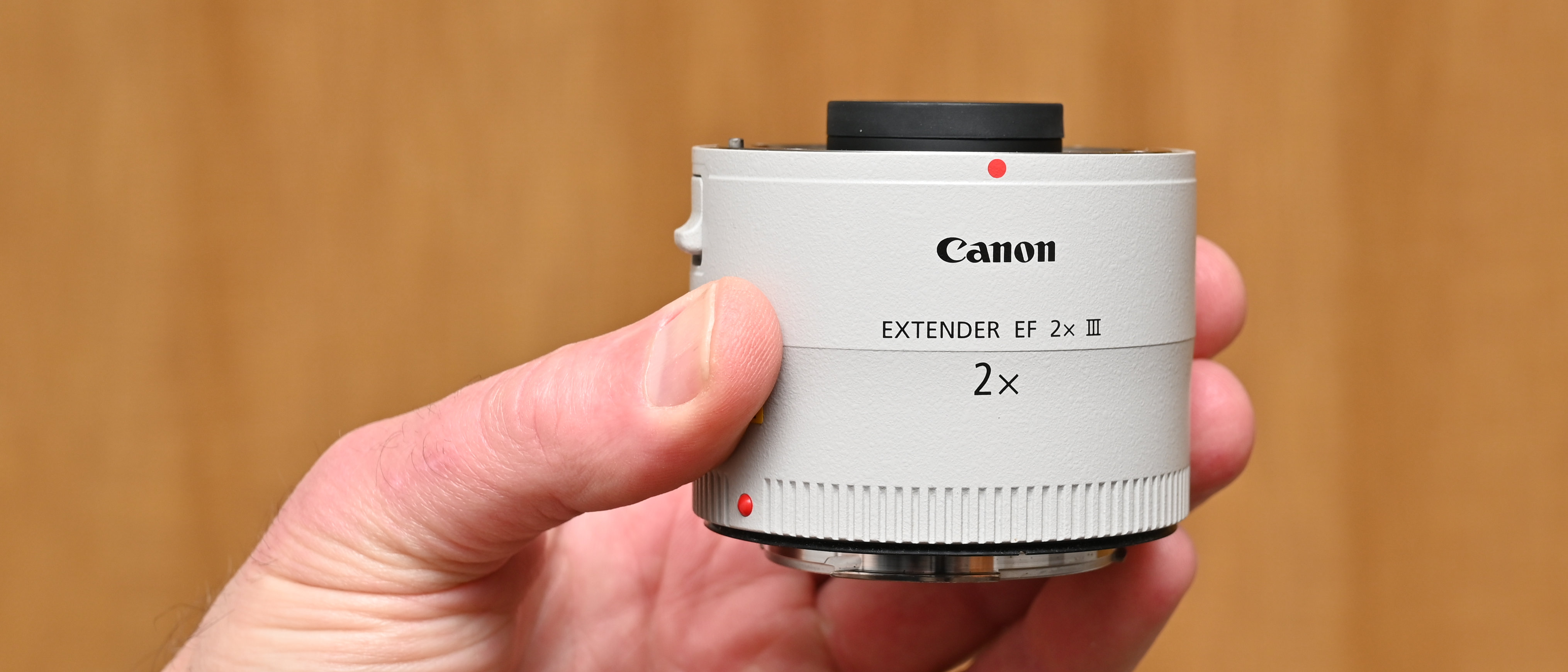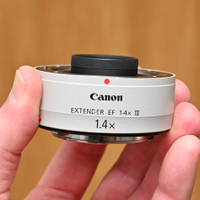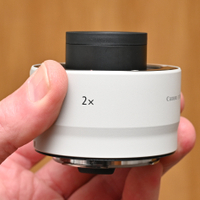Digital Camera World Verdict
I like that the Canon Extender EF 2x III doubles my telephoto reach but is only a tiny fraction of the size, weight, and cost of buying a whole extra super-telephoto lens. Build quality, handling and performance are all impressive.
Pros
- +
Twice the telephoto reach
- +
Built-in processor enhances performance
- +
Solid, weather-sealed build
Cons
- -
Drops 2 f/stops in aperture rating
- -
Slight degradation of image quality
- -
Incompatible with some lenses
Why you can trust Digital Camera World
Surely the last in an illustrious line of Canon EF-mount 2x ‘extenders’ or teleconverters, the Mark III edition is designed for Canon cameras and compatible EF-mount Canon telephoto lenses. It’s primarily designed for DSLRs but can also be used on EOS R-system mirrorless cameras via an EF-EOS R mount adapter.
As such, it’s one of the best teleconverters on the market. As a 2x teleconverter, the focal length of the attached lens doubled, with a reduction in aperture rating of two f/stops. For example, add it to a Canon EF 70-200mm f/2.8L IS III USM zoom and you effectively get a 140-400mm f/5.6 super-telephoto lens.
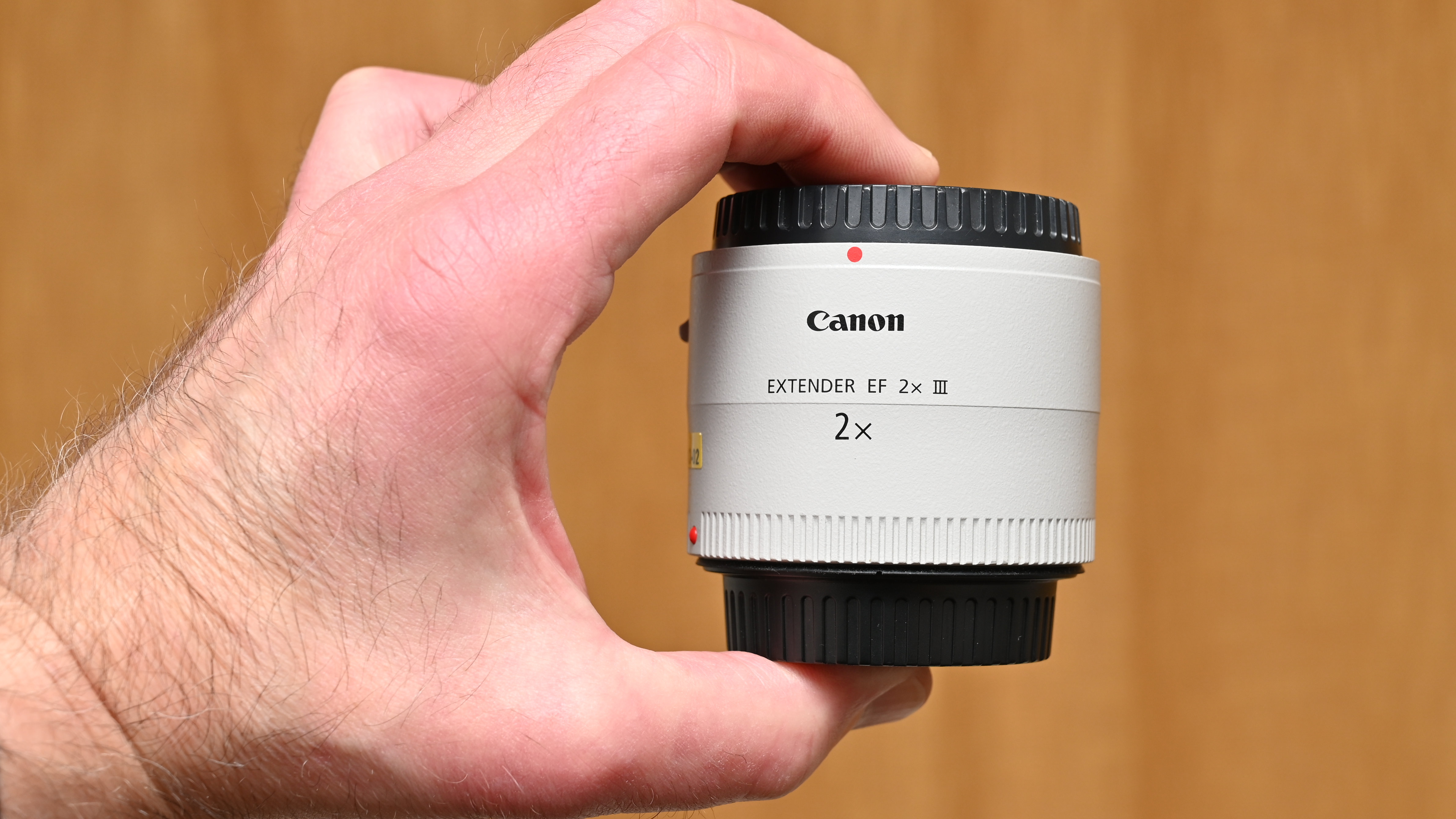
The 2-stop aperture reduction naturally results in slower shutter speeds but it can also cause problems for DSLRs. For example, if you use the teleconverter with a Canon EF 100-400mm f/4.5-5.6L IS II USM lens, the widest available aperture at longer zoom settings becomes f/11, giving a dark viewfinder image and ruling out autofocus even on the most recent Canon DSLRs that support autofocus at f/8.
On the upside, the minimum focus distance of the main lens remains unchanged when using the teleconverter. You therefore get a 2x boost in the maximum magnification ratio. With some telephoto lenses, it takes close-up potential into macro territory.
Canon Extender EF 2x III: What's changed?
Compared with earlier editions, the Mark III features a completely redesigned optical path and a tougher, weather-sealed construction with a new lock release mechanism. It also features an integrated microprocessor for enhanced data communication between the main lens and host camera body.
Canon Extender EF 2x III: Specifications
| Mount | Canon EF |
| Lens construction | 9 elements in 5 groups |
| Focal length multiplier | 2.0x that of main lens |
| Aperture reduction | 2 f/stops |
| Minimum focus distance | Same as main lens |
| Maximum magnification | 2.0x that of main lens |
| Filter size | N/A |
| Dimensions | 72 x 52.7mm |
| Weight | 325g |
Canon Extender EF 2x III: Price & Availability
Originally launched back in 2010, the Canon Extender EF 2x III certainly is currently priced at $429 / £469 / AU$749. It’s not cheap for a teleconverter but is good value considering the features and build quality. It’s slightly less expensive than the rival Nikon AF-S TC-20E III for Nikon DSLRs and the newer Canon Extender RF 2x for EOS R-system cameras, the latter with a price tag of $599 / £719 / AU$999.
Canon Extender EF 2x III: Design & Handling
The Canon Extender EF 2x III has dimensions of 72 x 52.7mm, or a couple of inches long and weighs in at 325g, so it’s the size and weight I’d expect for modern full-frame compatible 2x teleconverter. It’s about twice the length of its sibling 1.4x teleconverter and 100g heavier but still very manageable. Naturally, it’s only a tiny fraction of the size and weight of carrying around an additional super-telephoto lens, which is a major plus point for shooting scenarios like sports and wildlife.
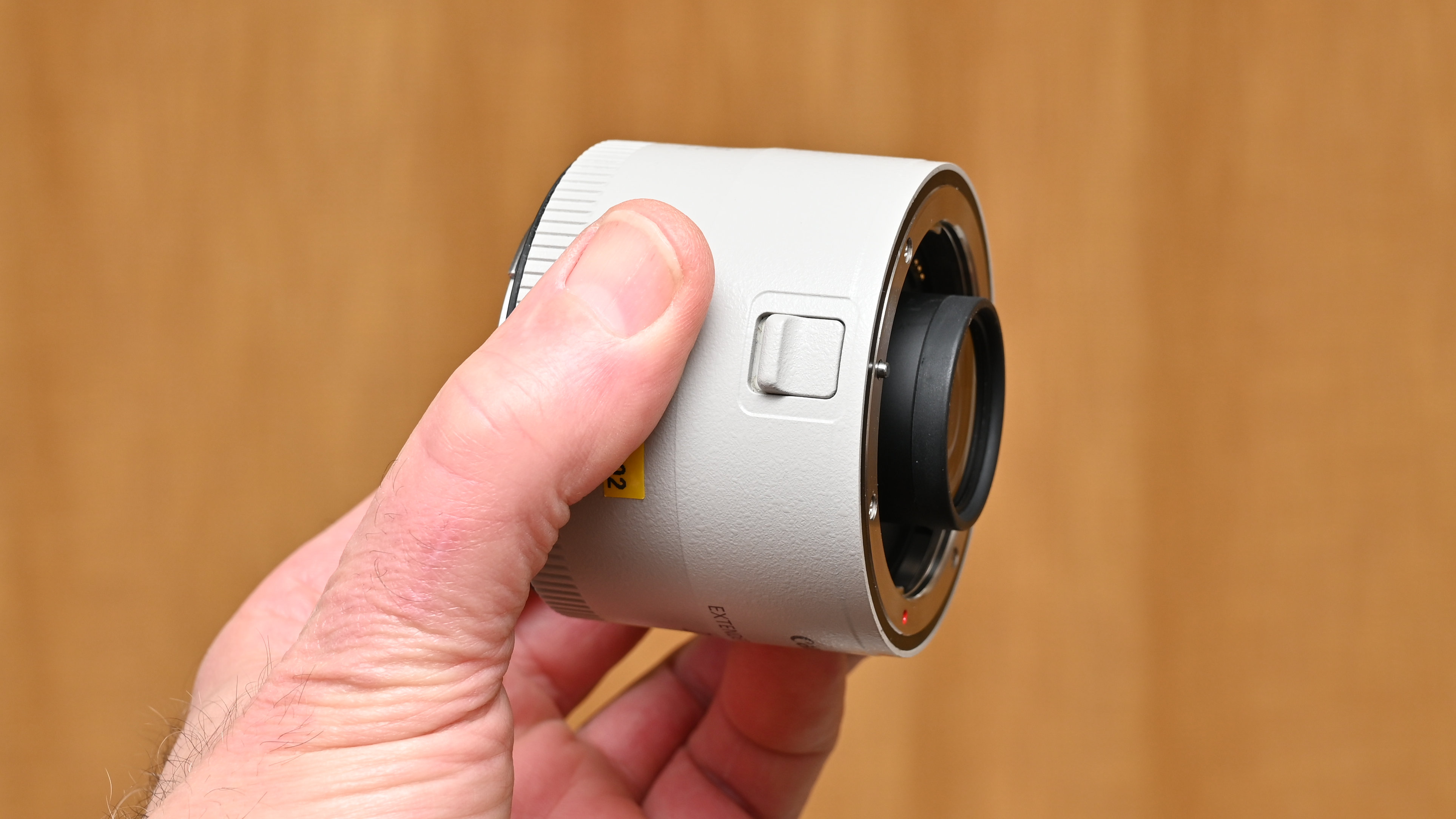
Despite being small and lightweight, teleconverters need to be strong. It’s essential if you’re coupling it to a big, heavyweight lens, like the Canon EF 400mm f/2.8L IS III USM that I used during testing, which is comparatively massive and weighs 2,840g. As well as taking the strain, it’s important that there’s no flexing which can degrade image quality in super-telephoto shooting. Thankfully this third edition feels super-solid and is upgraded to boost durability. It also features a set of weather-seals.
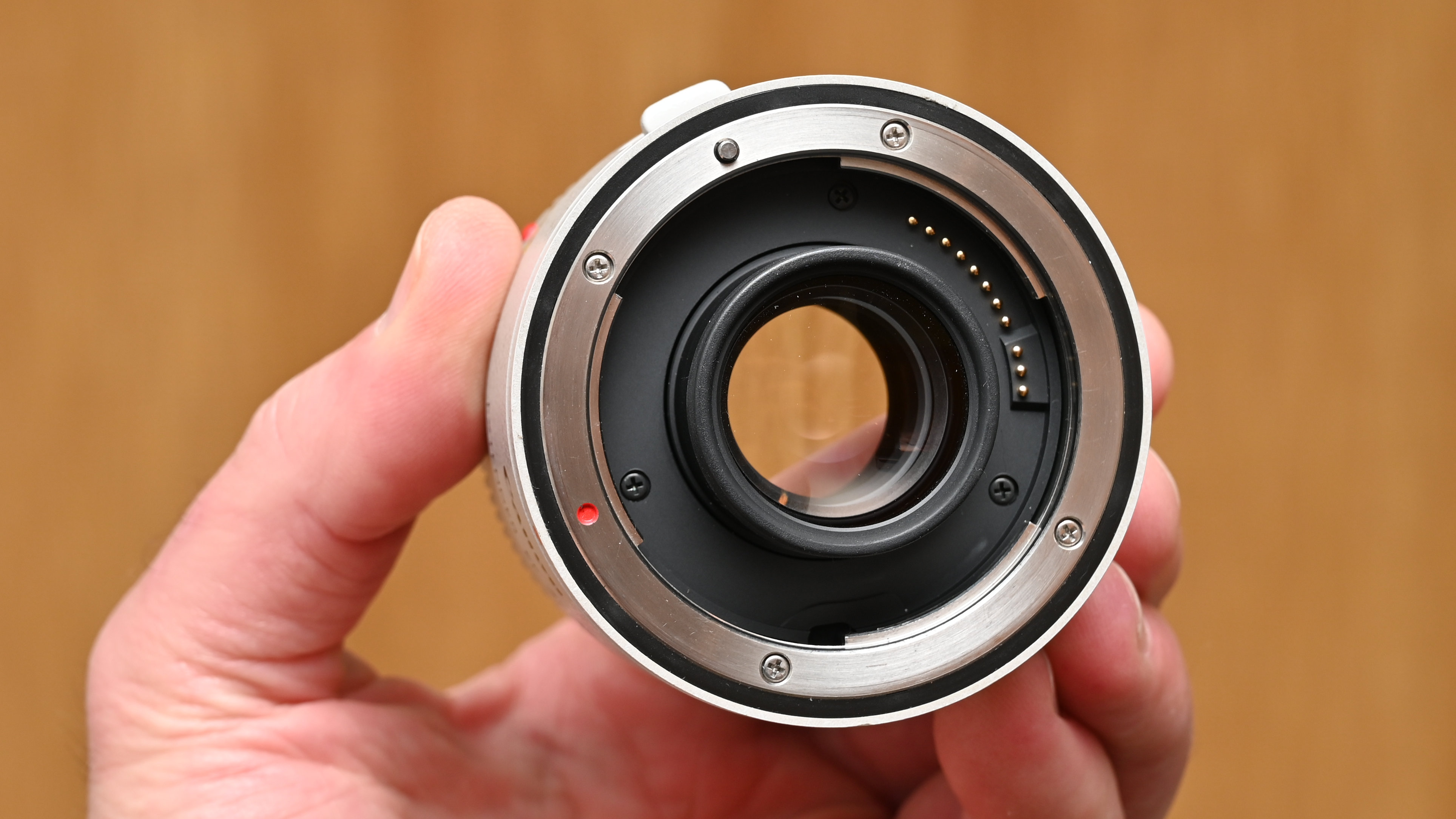
Although the teleconverter is only a couple of inches long, it packs in no less than 9 optical elements, arranged in 5 groups. The new optical layout of the third edition claims to enhance performance in terms of image quality. For full and speedy data communication between the main lens and host camera body, the Mark III adds an integral microprocessor.
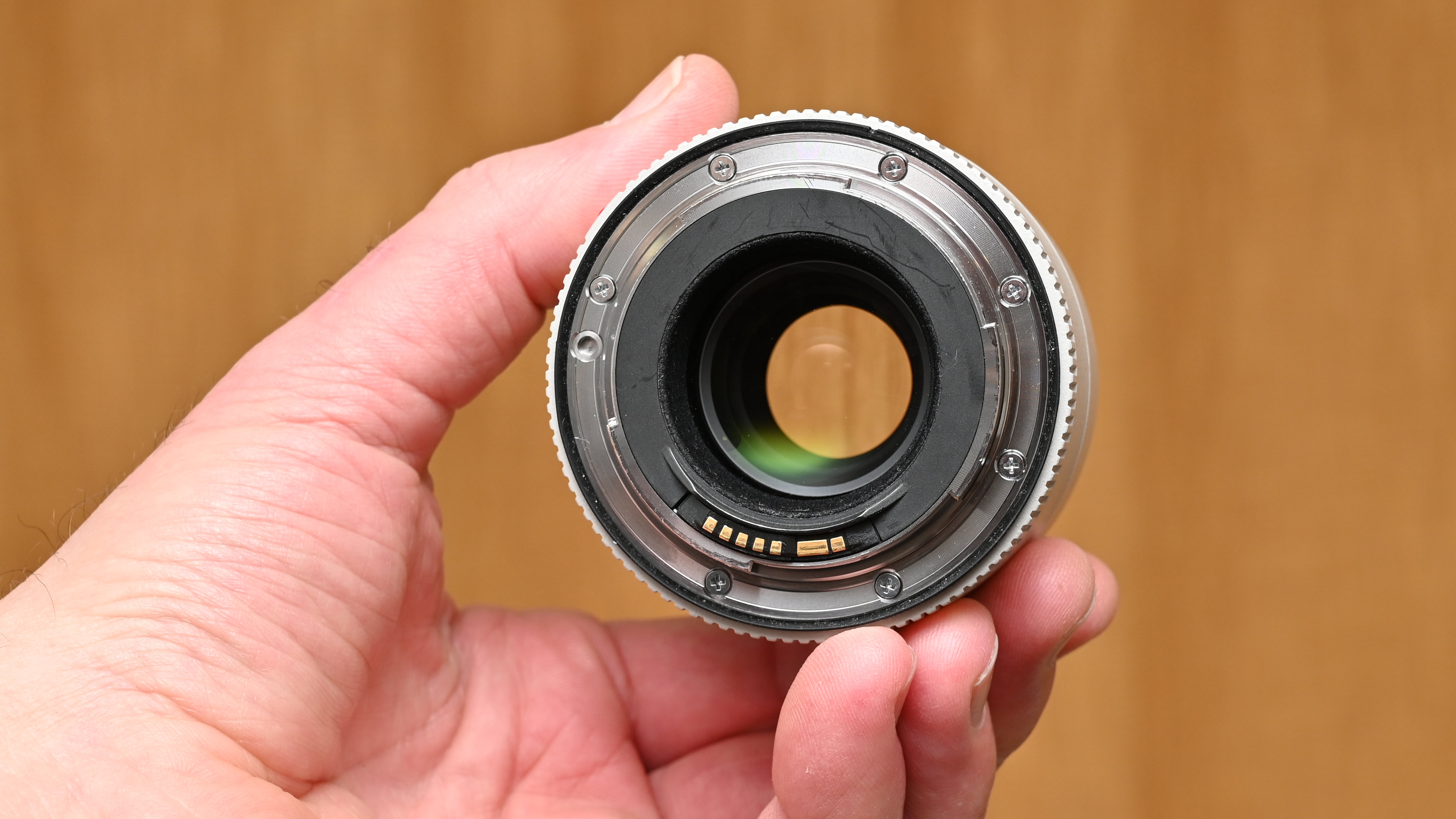

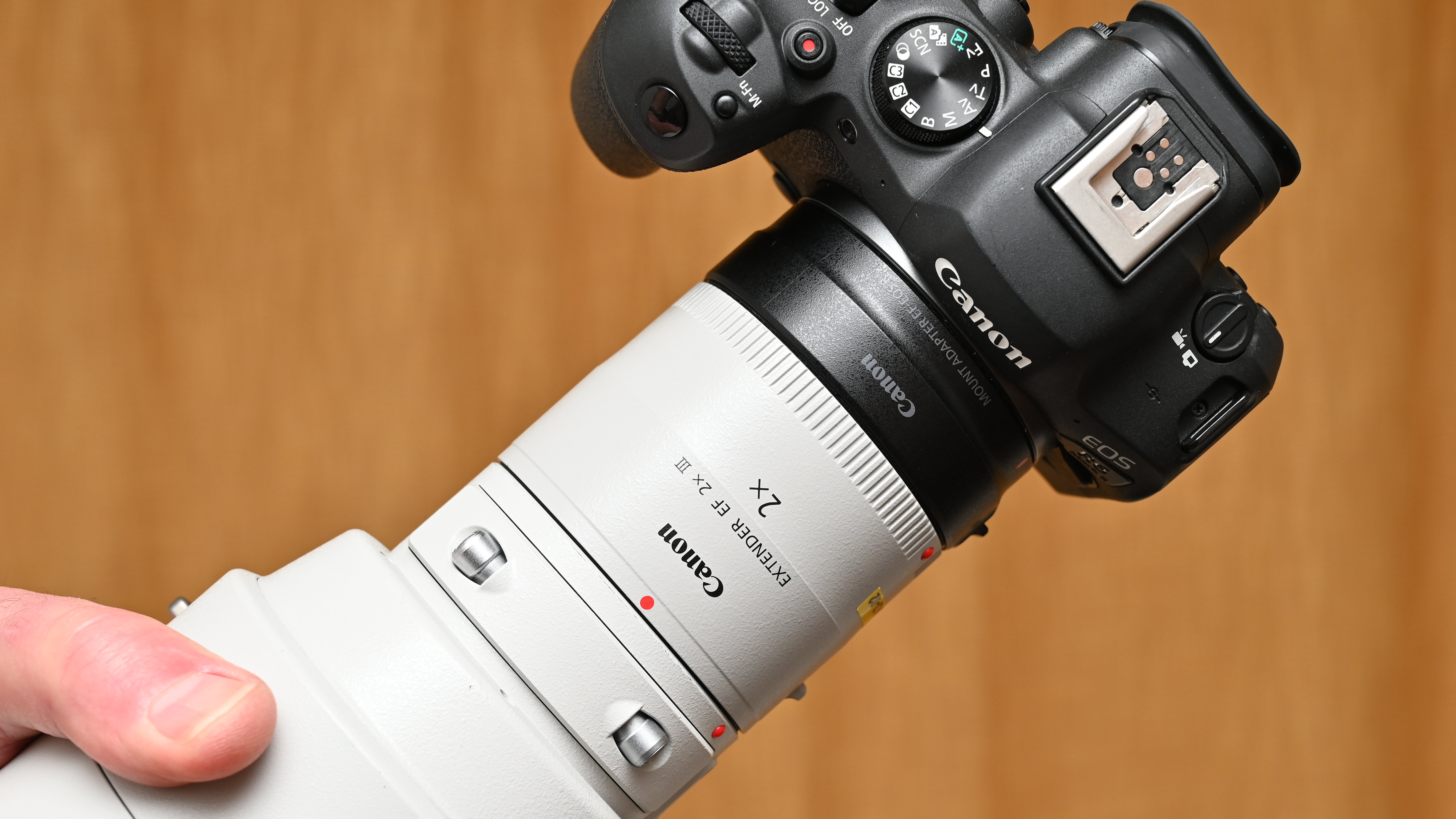
Canon Extender EF 2x III: Photo Performance
Teleconverters can be notorious for degrading the performance and image quality of lenses. There’s no denying that relatively cheap examples do just that. However, this Canon teleconverter is designed to have minimal impact on the performance of even the best Canon L-series telephoto prime and zoom lenses.
To judge performance, I tested the Canon Extender EF 2x III with a high-performance Canon EF 400mm f/2.8L IS III USM and a Canon EOS R6 Mark II camera body via an EF-EOS R mount adapter. I was impressed that autofocus speed remained very snappy, quickly locking onto subjects and tracking their movement very effectively. I also found that optical IS (Image Stabilization) gave the same effectiveness for handheld shooting with the teleconverter in place, taking into account that the focal length doubles, therefore requiring a faster shutter speed.
Even the best 2x teleconverters tend to impact on the sharpness of the main lens to some extent, and this one is no different. Our lab test results don’t look overly impressive but, in real-world shooting, I found that very good levels of sharpness were retained, compared with using the 400mm lens on its own. Distortion is actually reduced and, while there’s an increase in color fringing, it remains well within the remit of the automatic in-camera correction featured in current and recent Canon cameras.
Canon Extender EF 2x III: Sample Images
For the sake of comparison, the following gallery includes a series of shots taken with a Canon EOS R6 Mark II (with EF-EOS R mount adapter) and a Canon EF 400mm f/2.8L IS III USM on its own, as well as with both a Canon Extender EF 1.4x III and a Canon Extender EF 2x III. This shows differences between using the lens natively, as well as with the 1.4x and 2x teleconverters. The first sequence was taken from a viewpoint overlooking the city of Bath, UK, from a distance of half a mile, on an overcast morning. Due to deteriorating weather conditions with strong winds and heavy rain, the subsequent shots were taken indoors with bounced flash. All of the example images were taken using a sturdy tripod and exposure delay mode, and shot several times to ensure the consistency of results. As per our usual testing regime, all of these images were taken in addition to the lab-test shots that we capture, based on the use of official test charts.















Canon Extender EF 2x III: Lab Results
We run a range of lab tests under controlled conditions, using the Imatest Master testing suite. Photos of test charts are taken across the range of apertures and zooms (where available), then analyzed for sharpness, distortion and chromatic aberrations.
We use Imatest SFR (spatial frequency response) charts and analysis software to plot lens resolution at the center of the image frame, corners and mid-point distances, across the range of aperture settings and, with zoom lenses, at four different focal lengths. The tests also measure distortion and color fringing (chromatic aberration).
Sharpness:
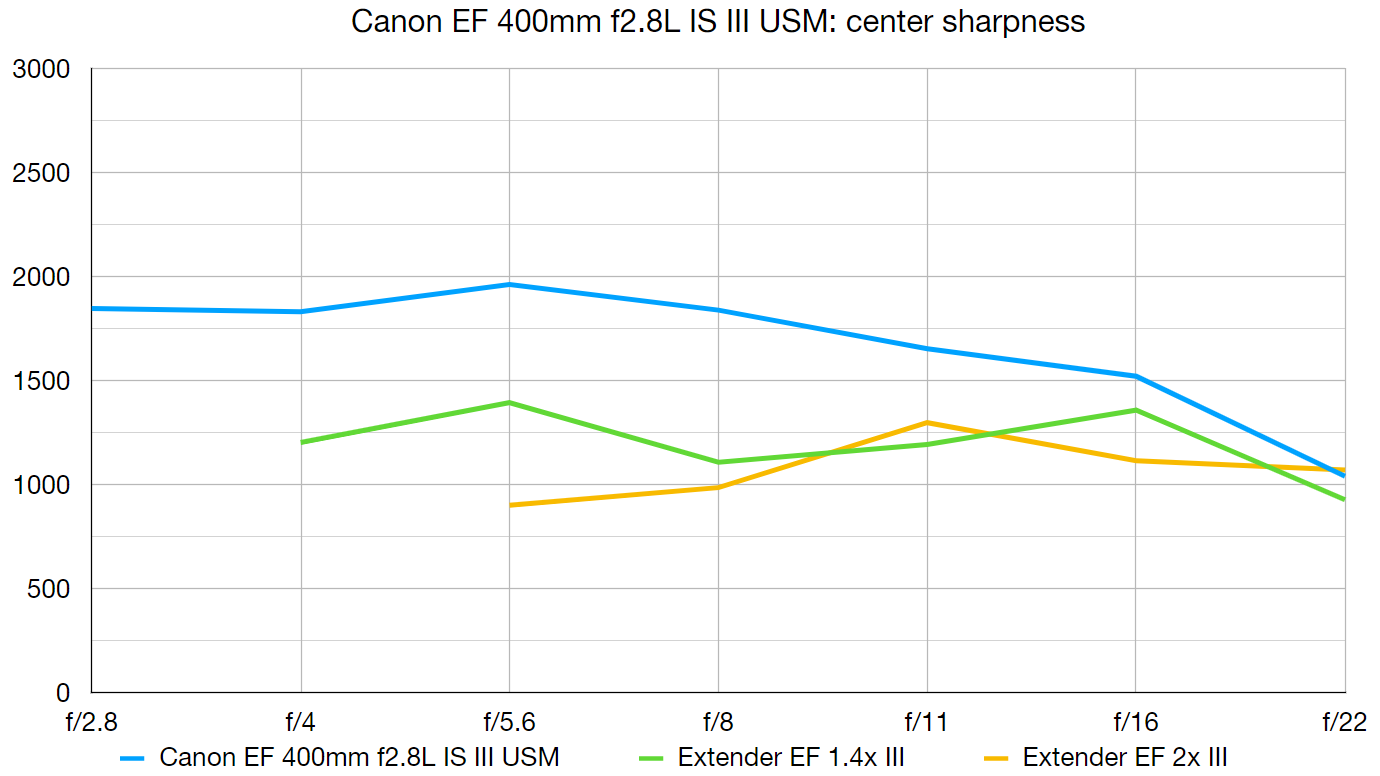
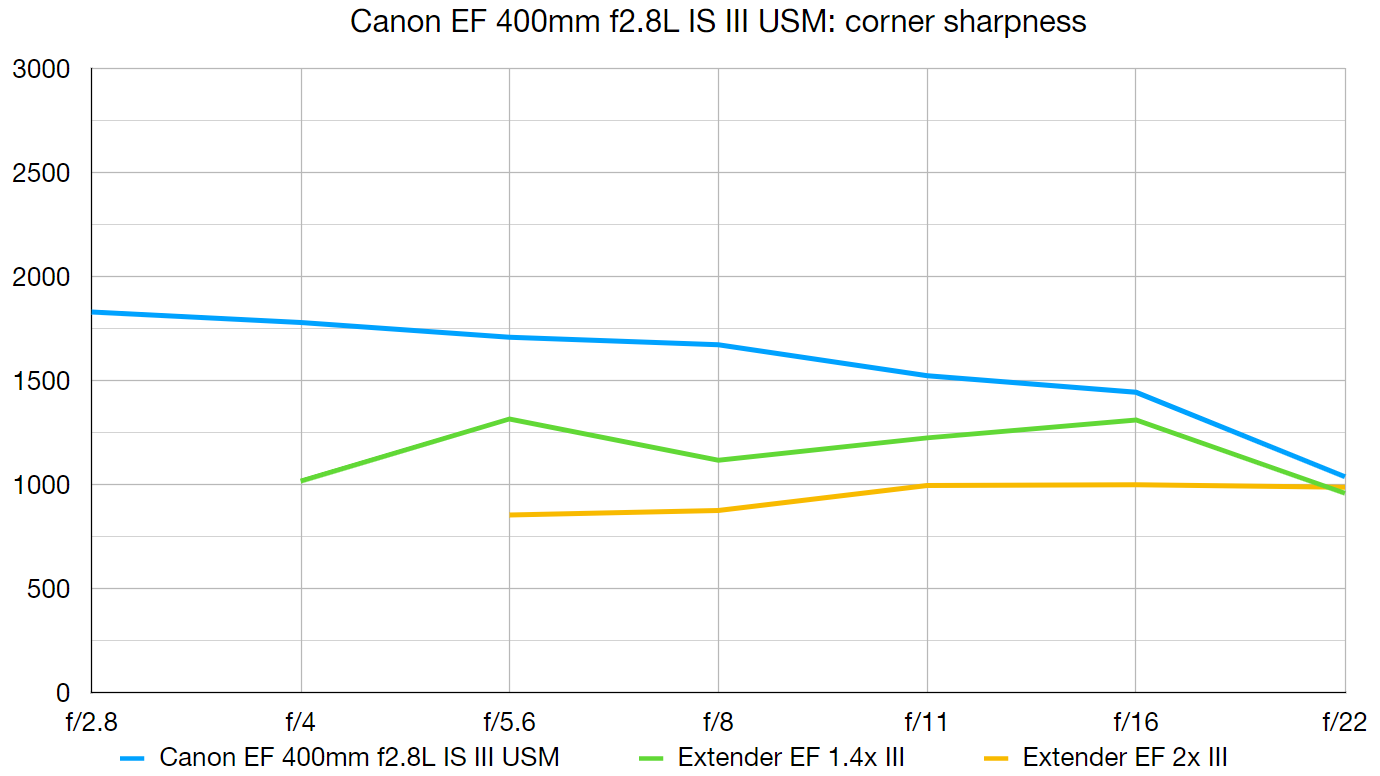
Our lab tests reveal a drop in sharpness when using the 2x teleconverter with a 400mm lens but, in real-world shooting, we found that images retained plenty of sharpness and clarity.
Fringing:
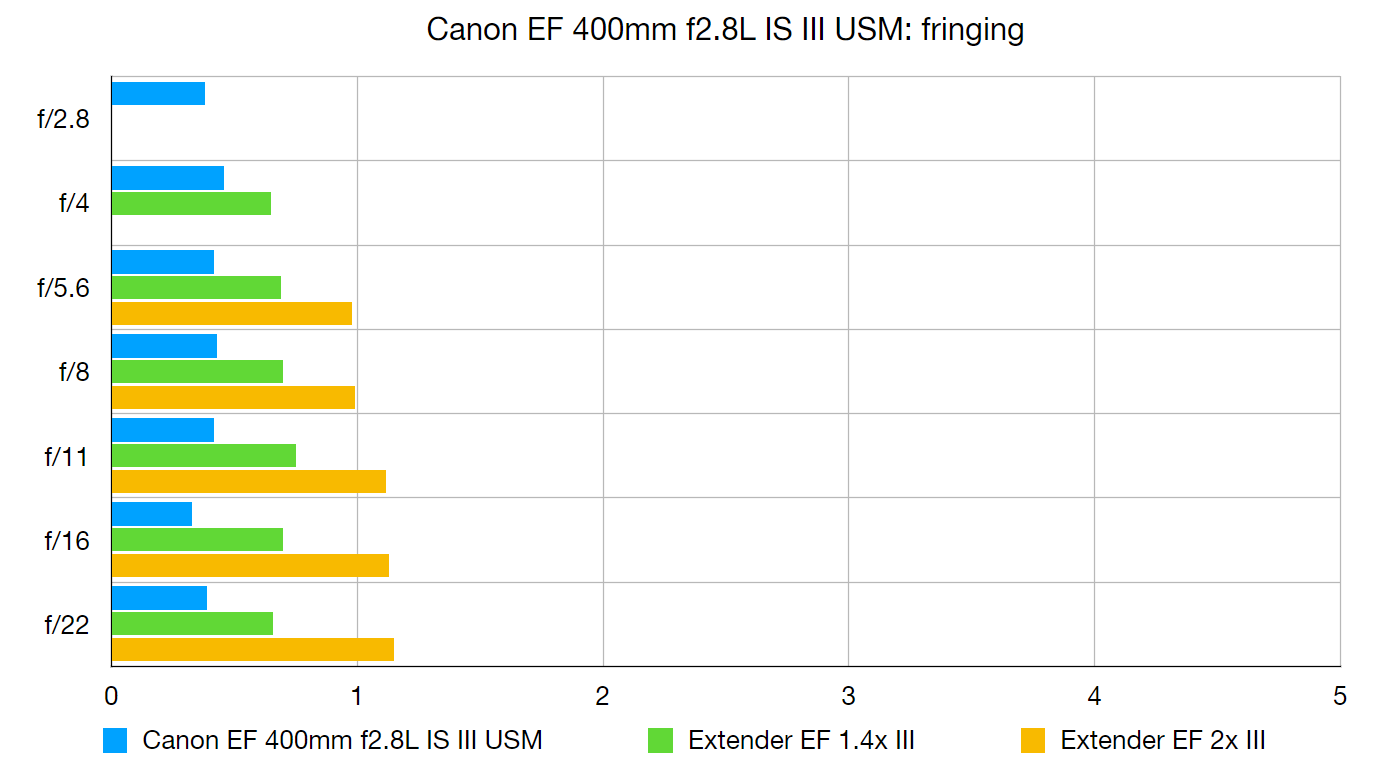
There’s an increase in color fringing when attaching the teleconverter to the main lens, in all areas of the image frame, but automatic in-camera correction featured in current and recent camera cameras takes care of it.
Distortion: -0.19
The 400mm lens that we used for testing produces slight pincushion distortion but, with the 2x teleconverter fitted, negligible barrel distortion is virtually unnoticeable.
Canon Extender EF 2x III: Verdict
There’s a lot to like in this little teleconverter. For me, the Canon Extender EF 2x III is one of those ‘tiny but mighty’ products that really delivers on its promises. I found that it gave incredible reach with the Canon EF 400mm f/2.8L IS III USM during testing, effectively giving me an 800mm f/5.6 lens while maintaining really good image quality, autofocus speed and optical image stabilization performance. And it’s only a tiny fraction of the expense, size and weight of buying an extra super-telephoto lens.
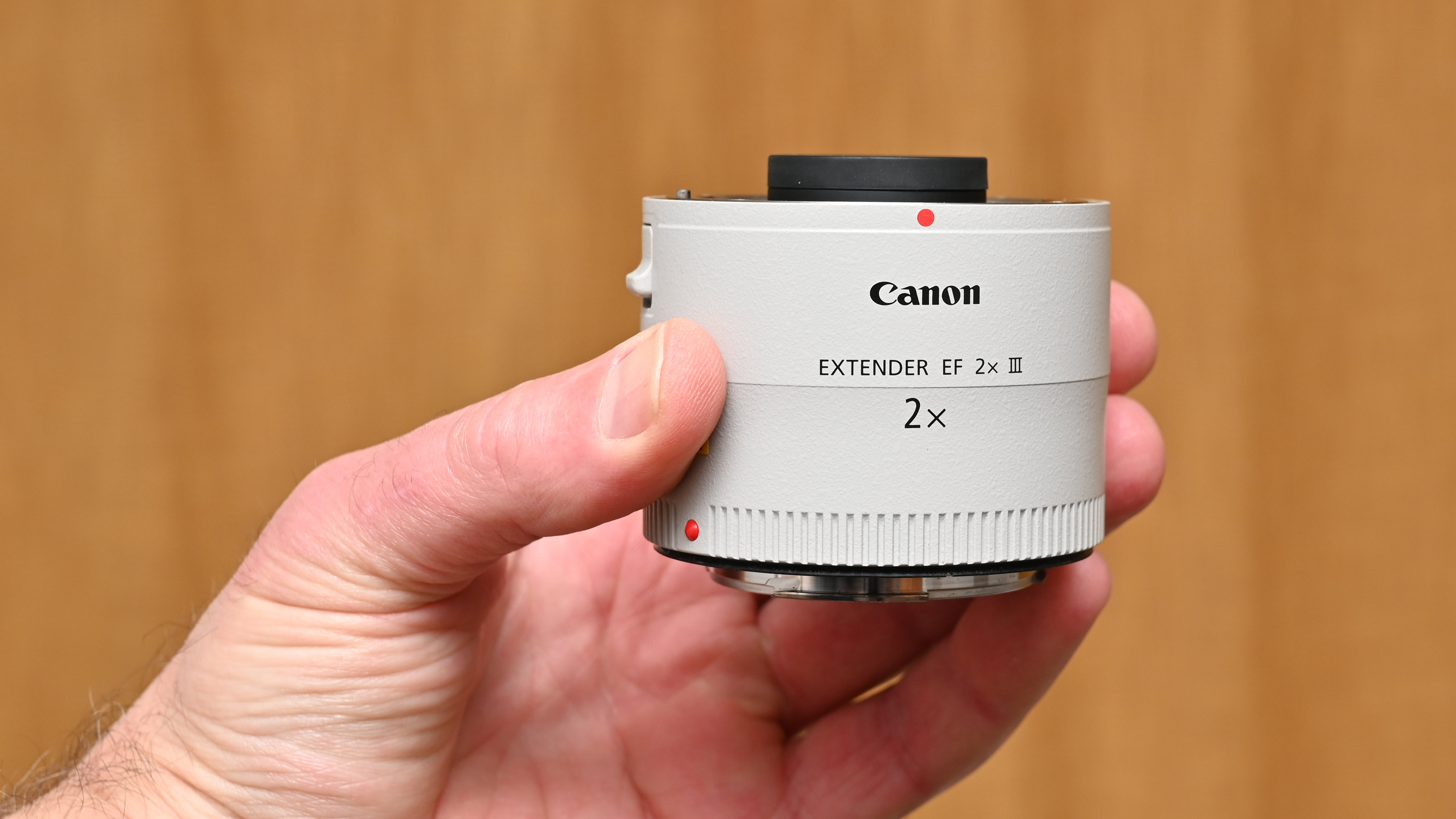
Should you buy the Canon Extender EF 2x III?
✅ Buy this...
- Doubles your telephoto reach
- Well built with weather-seals
- Impressive performance
🚫 Don't buy this...
- Drops 2 f/stops from the main lens
- Incompatible with some lenses
- Slight degradation of main lens quality
Alternatives
The Canon Extender EF 1.4x III gives 1.4x magnification rather than 2x, so it’s less powerful but smaller and lighter, and you only lose one f/stop in aperture rather than two stops.
If you use an EOS R-system camera, the Canon Extender RF 2x is the native equivalent for mirrorless camera bodies and compatible RF-mount telephoto lenses.
Matthew Richards is a photographer and journalist who has spent years using and reviewing all manner of photo gear. He is Digital Camera World's principal lens reviewer – and has tested more primes and zooms than most people have had hot dinners!
His expertise with equipment doesn’t end there, though. He is also an encyclopedia when it comes to all manner of cameras, camera holsters and bags, flashguns, tripods and heads, printers, papers and inks, and just about anything imaging-related.
In an earlier life he was a broadcast engineer at the BBC, as well as a former editor of PC Guide.
